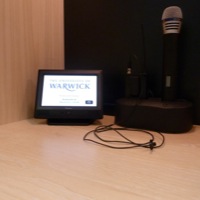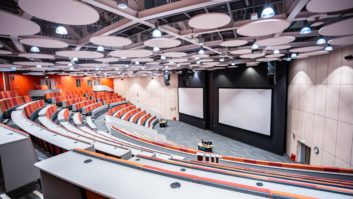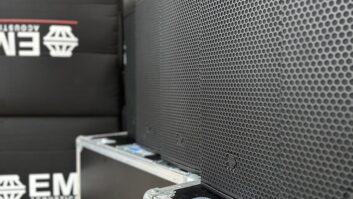
Warwick University, UK, has upgraded its wireless microphone systems with Polar Audio in line with new legislation surrounding the RF frequency spectrum. The university’s 700-acre campus near the city of Coventry serves 22,000 students and has a strong reputation for academic excellence – consistently appearing in the top 10 UK university league tables. As well as providing teaching and accommodation environments for its students the university campus is also a focus for the wider community in the shape of the Warwick Arts Centre and the University Sports Centre. In 2011, as a result of changes to the RF spectrum, the University enlisted Polar Audio to prepare a system design which required 216 channels of wireless UHF microphones for use across what is a large campus.
Polar Audio undertook a detailed site-survey and scan of all the locations involved. The frequency plan needed to allow for the use of large numbers of microphones in adjacent departmental spaces, in condensed areas of the site. To complicate matters further, the system also needed to work in close proximity to The Warwick Arts Centre, an on-campus theatre operating independently of the university AV department, where visiting companies would bring in their own wireless systems on an ad hoc basis. Polar Audio created a concept within the interleaved wireless spectrum and set about the installation in conjunction with the university’s in-house technical team. The beyerdynamic Opus 910 wireless system proved best placed to offer the solution to this challenge. Due to the wealth of channels supported interference-free, the product could be positioned and configured to easily operate in a heavily wireless- utilised environment. Combined with user-friendly rechargeable transmitters with SLG900 docking stations, each lecture theatre and teaching space could have the required number of microphones offering simple and intuitive operation for users.
Of huge benefit to the university was the fact that the SLG900 docking stations allow transmitters to be docked on the credenza at the front of lecture theatres. The system allows one hand held and one lapel/belt pack per station thus dispensing with the need for changing batteries. A simple on / off button, rather than complicated push and hold buttons, make the unit straightforward for non-technical users. Integrated with an existing control system, Opus 910 allows the operator to see both signal strength and battery level indicators. In the event that signal strength drops on account of accidental (or deliberate) removal of a transmitter from its location, it will raise an alarm, thus adding a useful layer of security. The features offered by Opus 910 have resulted in its widespread adoption in corporate and higher education circles. www.polaraudio.co.ukwww.byerdynamic.com







